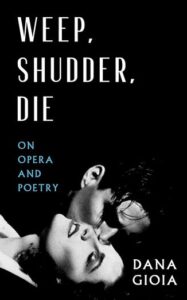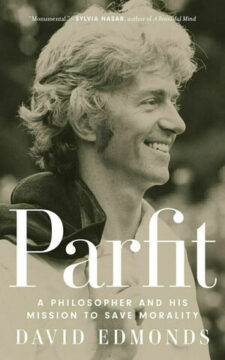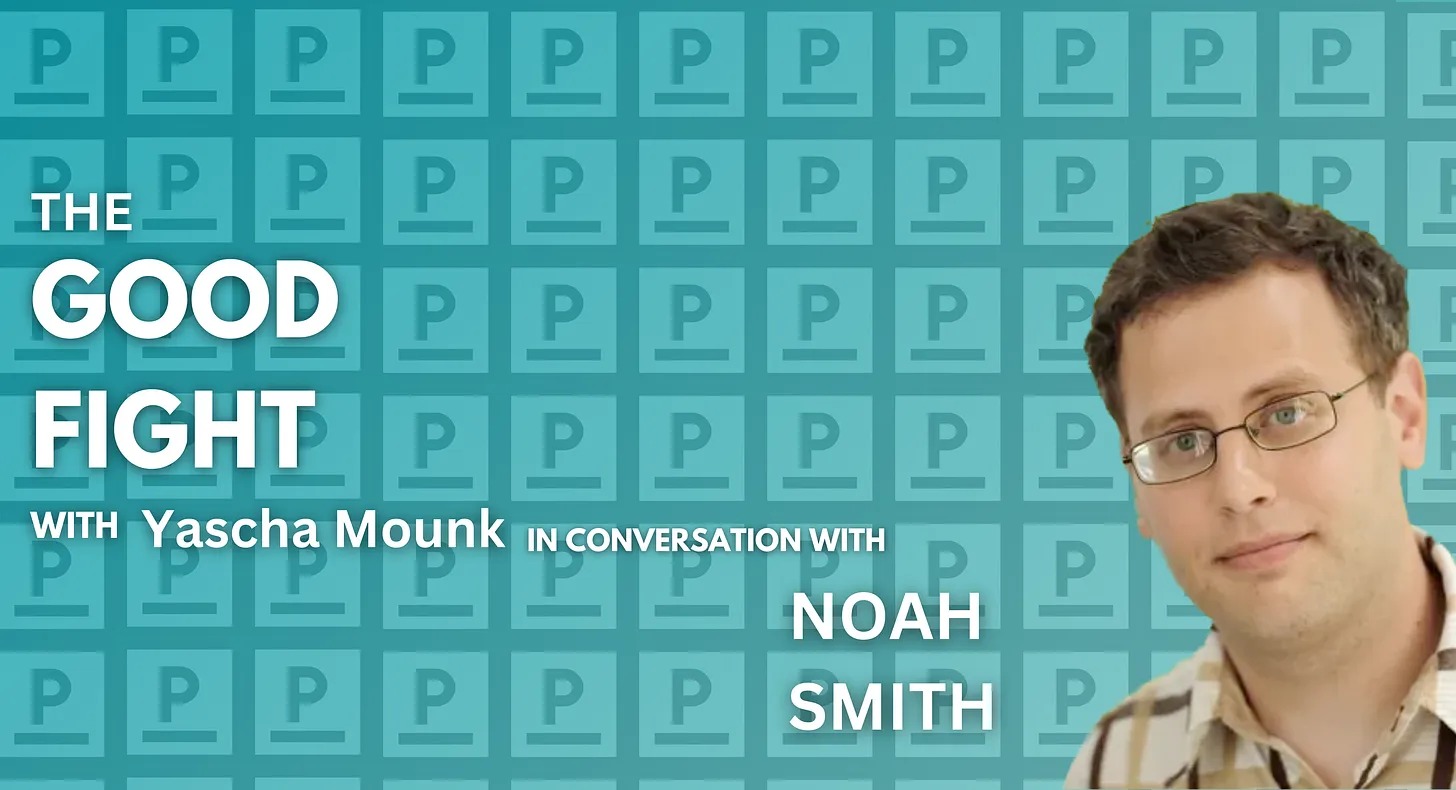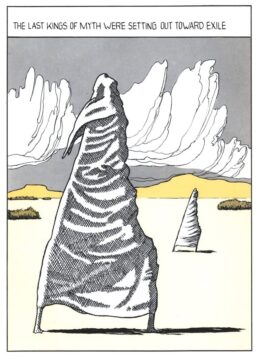Purge
The Aryan Jesus, in Hitler’s painting
Madonna and Child, is, I trust, a Jew,
however blond, beneath a firmament
whose children are not yet children,
but calm, sententious, and removed, steadfast
as the precious metal in their hair.
Doubtless our little savior is feeling
over-yellow, as the wheat must feel
given the liberal sentiment it’s under,
where peasantry of a German valley,
somewhere south of new Jerusalem,
busy themselves, harvesting the light.
They kneel in the style of Valkyrie
left to rummage through the battlefield,
to gather the bold who died like gods.
Aryan Jesus was created from light,
extruded from a tube of cadmium,
zinc, acidic salt, antigens that target
a brain, a heart, a testicle, a tongue,
vital systems gone unnoticed until,
exhumed, they make their failures known.
Aryan Jesus is, of course, immune,
and so lives on, baptized in the blood
laid down in gilded portraits such as these.
Let me begin again. A child is born,
and as the manger cripples in the wind,
as the cow and donkey wander off
toward a dip of land on the horizon,
the cradle waxes luminous, raised
an inch above the excrement and hay.
Even as names fade from the gravestones
that are painted figures, bent beneath
their weight in gold, the work ahead continues.
A brilliance fills the carriage where it sighs
into the mire and workers never sleep.
So tireless their labor, they hallucinate
angels, flags, wheat where there is only
emptiness now, emptiness and ether,
fire and all that providence consumes.
by Bruce Bond
from Plume Magazine, issue #160, 12/24
Enjoying the content on 3QD? Help keep us going by donating now.

 Graceland. I am here, for the first time, for the forty-fifth anniversary of Elvis Presley’s death. The name does not feel apt. Surrounded by sweaty, mutton-chopped worshippers in shiny polyester jumpsuits, women with wrinkly tattoos, and little boys in capes, I gulp down hot, syrupy banana glopped with peanut butter on smashed Bunny Bread to condition myself, then set out to meet the fans who keep a dead man alive as an engine of consumerism, a weird religion, and an inexplicable (to me) lifelong obsession.
Graceland. I am here, for the first time, for the forty-fifth anniversary of Elvis Presley’s death. The name does not feel apt. Surrounded by sweaty, mutton-chopped worshippers in shiny polyester jumpsuits, women with wrinkly tattoos, and little boys in capes, I gulp down hot, syrupy banana glopped with peanut butter on smashed Bunny Bread to condition myself, then set out to meet the fans who keep a dead man alive as an engine of consumerism, a weird religion, and an inexplicable (to me) lifelong obsession. What if I told you the next energy revolution isn’t in the sky, but under your feet?
What if I told you the next energy revolution isn’t in the sky, but under your feet? Poet and former National Endowment for the Arts chairman
Poet and former National Endowment for the Arts chairman  In his new book,
In his new book,  NEAR THE END of Samantha Allen’s new novel Roland Rogers Isn’t Dead Yet, a memoirist who’s been moonlighting as a ghostwriter confides that he isn’t really an artist anymore, or anyway not the kind who’ll likely win a National Book Award. “I’m never going to be one of those waiflike, purple prose–writing authors who gets cover blurbs like ‘delicate and masterful’ or ‘a powerful meditation on X, Y, and Z.’”
NEAR THE END of Samantha Allen’s new novel Roland Rogers Isn’t Dead Yet, a memoirist who’s been moonlighting as a ghostwriter confides that he isn’t really an artist anymore, or anyway not the kind who’ll likely win a National Book Award. “I’m never going to be one of those waiflike, purple prose–writing authors who gets cover blurbs like ‘delicate and masterful’ or ‘a powerful meditation on X, Y, and Z.’” W
W LUMS is proud and thrilled to acquire the Lutfullah Khan Sound Archive, the premier repository for the literary, cultural, musical, and intellectual heritage of Pakistan and the wider region. There is no other audio library in the region that comes close to matching the scale, richness, and uniqueness of this incredible collection that is bound to serve as an invaluable resource for interdisciplinary scholarship, student learning, and community outreach across various disciplines, including history, sociology, religion, cultural studies, musicology, film studies, and more.
LUMS is proud and thrilled to acquire the Lutfullah Khan Sound Archive, the premier repository for the literary, cultural, musical, and intellectual heritage of Pakistan and the wider region. There is no other audio library in the region that comes close to matching the scale, richness, and uniqueness of this incredible collection that is bound to serve as an invaluable resource for interdisciplinary scholarship, student learning, and community outreach across various disciplines, including history, sociology, religion, cultural studies, musicology, film studies, and more. David Edmonds’ Parfit belongs to a burgeoning genre. There are the two recent collective biographies of Anscombe, Foot, Midgley and Murdoch (by Benjamin Lipscomb and by Claire Mac Cumhaill and Rachael Wiseman). There are M.W. Rowe’s J.L. Austin: Philosopher and D-Day Intelligence Officer and Nikhil Krishnan’s A Terribly Serious Adventure. Earlier works include Ray Monk’s Russell and Wittgenstein volumes, Tom Regan’s Bloomsbury’s Prophet, and Bart Schultz’s books on Sidgwick and the other classical utilitarians. And Edmonds himself is inter alia the author of The Murder of Professor Schlick and the coauthor of Wittgenstein’s Poker.
David Edmonds’ Parfit belongs to a burgeoning genre. There are the two recent collective biographies of Anscombe, Foot, Midgley and Murdoch (by Benjamin Lipscomb and by Claire Mac Cumhaill and Rachael Wiseman). There are M.W. Rowe’s J.L. Austin: Philosopher and D-Day Intelligence Officer and Nikhil Krishnan’s A Terribly Serious Adventure. Earlier works include Ray Monk’s Russell and Wittgenstein volumes, Tom Regan’s Bloomsbury’s Prophet, and Bart Schultz’s books on Sidgwick and the other classical utilitarians. And Edmonds himself is inter alia the author of The Murder of Professor Schlick and the coauthor of Wittgenstein’s Poker.
 Yascha Mounk: I’ve been trying to think through the state of economic policy at the moment, and it seems to me that we’re in a strange moment where there was a clear paradigm that economists followed in the ‘90s and perhaps the early 2000s, and that ran aground. Then there was a principled alternative to it that parts of the left tried to put forward, but that seems to have run aground as well.
Yascha Mounk: I’ve been trying to think through the state of economic policy at the moment, and it seems to me that we’re in a strange moment where there was a clear paradigm that economists followed in the ‘90s and perhaps the early 2000s, and that ran aground. Then there was a principled alternative to it that parts of the left tried to put forward, but that seems to have run aground as well. In the room devoted to the archives of Lucian Freud in London’s National Portrait Gallery, a strikingly tender painting depicts a young woman with waifish features, blond tresses, and enormous slate-blue eyes. The portrait, “Girl in Bed,” has a delicacy that stands out amid the characteristically mottled, fleshy faces of Freud’s subjects—the slender fingers and crumpled duvet, the high blush on the cheeks. The girl in question is Caroline Blackwood, a twenty-one-year-old heiress of aristocratic extraction, who would soon become the artist’s wife. Freud made ten-odd paintings of Blackwood, charting the zigzag of their relationship, from the sensitive, alluring “Girl Reading” and “Girl in Bed” (both produced in 1952, at the height of their courtship), to the abject “Hotel Bedroom,” from 1954, in which Blackwood appears wizened and withdrawn, while Freud himself stands by the window, lost in shadow.
In the room devoted to the archives of Lucian Freud in London’s National Portrait Gallery, a strikingly tender painting depicts a young woman with waifish features, blond tresses, and enormous slate-blue eyes. The portrait, “Girl in Bed,” has a delicacy that stands out amid the characteristically mottled, fleshy faces of Freud’s subjects—the slender fingers and crumpled duvet, the high blush on the cheeks. The girl in question is Caroline Blackwood, a twenty-one-year-old heiress of aristocratic extraction, who would soon become the artist’s wife. Freud made ten-odd paintings of Blackwood, charting the zigzag of their relationship, from the sensitive, alluring “Girl Reading” and “Girl in Bed” (both produced in 1952, at the height of their courtship), to the abject “Hotel Bedroom,” from 1954, in which Blackwood appears wizened and withdrawn, while Freud himself stands by the window, lost in shadow. I
I